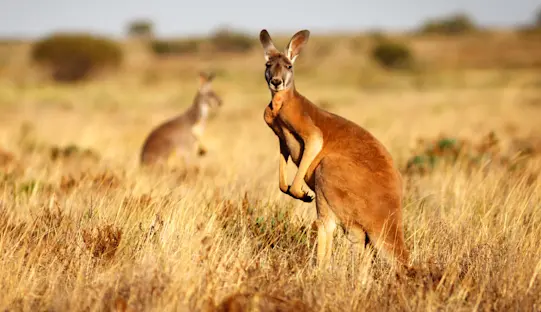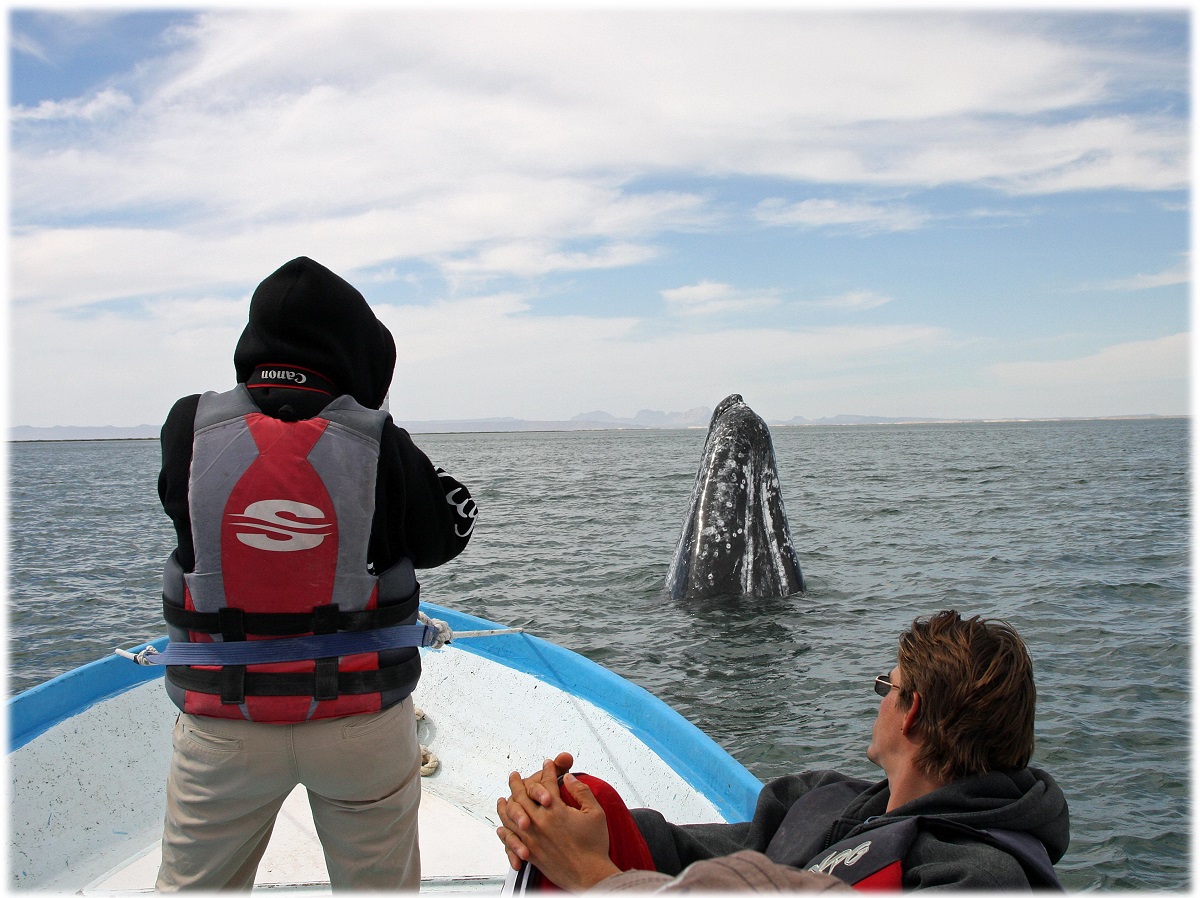Exciting news: Your next trip to see the Great Gray Whales of Baja will help directly fund whale research and conservation efforts in San Ignacio Lagoon!
This unique marine ecosystem is located in the Whale Sanctuary of El Vizcaino, a UNESCO World Heritage Site. In the late 1990s, the area came under serious threat from a proposed salt production facility that would have permanently altered the gray whales’ habitat. Fortunately, the proposal was shot down, and the community has come together in support of sustainable tourism that highlights the beautiful marine life of this Biosphere Reserve.
Since 2019, Nat Hab Philanthropy has donated $500 directly to Gray Whale Research in Mexico for each group of our travelers that visits the great gray whales of San Ignacio Lagoon in Baja California Sur. The nonprofit uses these donations to conduct studies on whale behavior and conservation methods.

A breaching gray whale.
Gray Whale Research in Mexico
The team is making significant strides in gray whale research, and the program publishes the official annual gray whale count for the San Ignacio Lagoon. Funds from Nat Hab have also helped scientists and students conduct their research and attend the World Marine Mammal Conference to present their research.
“This is great news and a wonderful opportunity for our researchers to be recognized in the international marine mammal scientific arena, and to meet and network with like-minded researchers that attend,” said Dr. Steven Swartz, program co-director and senior scientist.

A gray whale with her calf.
Gray Whale Numbers Recovering
In more good news, as of 2025, the North Pacific gray whales in San Ignacio Lagoon are exhibiting signs of recovery following the Unusual Mortality Event (UME) that impacted the population between 2018 and 2023. According to NOAA, the UME has officially ended, with stranding rates returning to expected levels and a significant increase in the number of migrating gray whales observed during the 2024–2025 season.

Nat Hab Philanthropy—Supporting Science and Conservation
The nonprofit’s numerous gray whale conservation projects aligned with our mission here at Nat Hab, where we seek to inspire conservation through exploration and education. We are thrilled to help further the work of scientists and student researchers who play a vital role in protecting the whales found in this essential marine sanctuary.
Want to learn more about these gentle giants for yourself? Encounter these massive cetaceans in the company of expert naturalist guides on a Great Gray Whales of Baja expedition.

Expedition Leader Sofia Merino, who has dedicated her professional life to studying these whales, shares details of Nat Hab’s winter whale adventures in Baja—which promise to spoil you for whale watching anywhere else!































